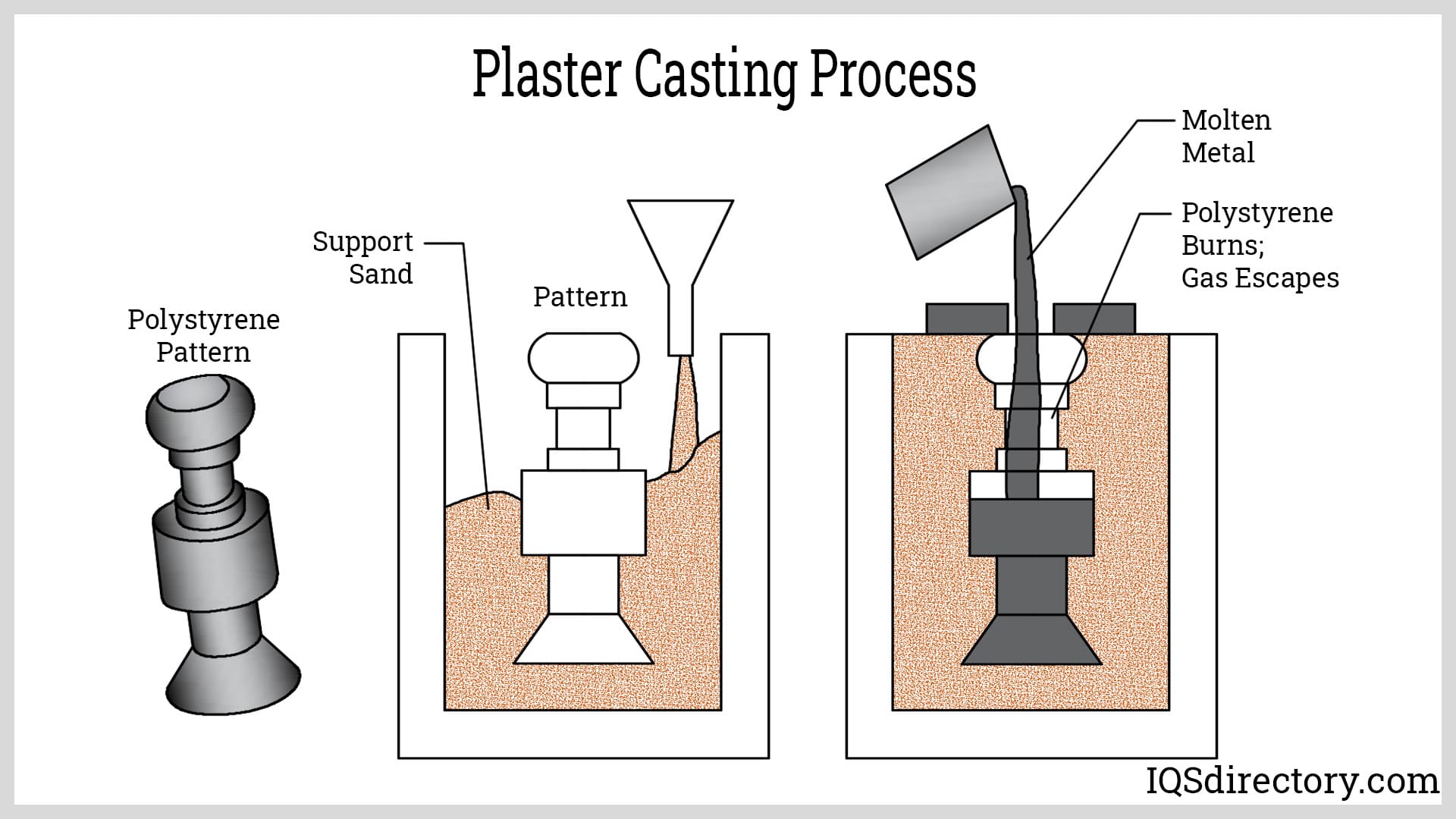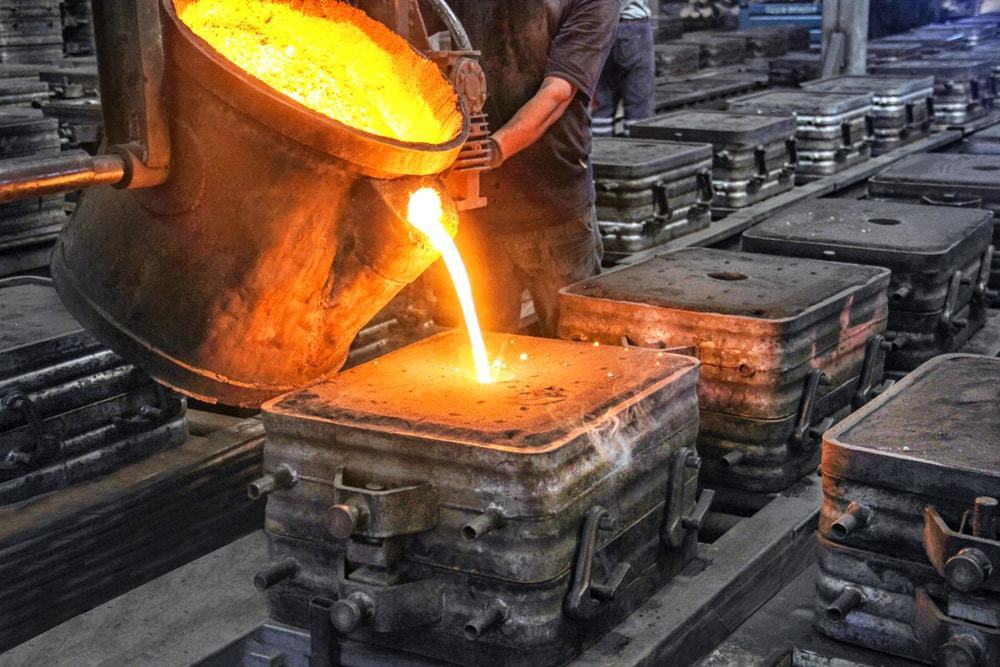Inside the world of Aluminum Foundry: modern casting solutions
Recognizing the Steel Castings Process: A Comprehensive Overview for Beginners
The Metal Casting process is a fundamental technique in making that transforms molten metal into strong forms. Novices must grasp the numerous approaches involved, such as sand spreading and pass away spreading. Comprehending the products, design principles, and precaution is equally crucial. Each facet plays an essential role in attaining effective outcomes. As one navigates these ins and outs, the concern of how to optimize each action for enhanced results becomes increasingly relevant.
The Basics of Metal Casting
Although Metal Casting has actually advanced over centuries, its fundamental concepts continue to be constant and indispensable to the production process. At its core, Metal Casting involves the change of liquified metal into solid things with numerous strategies. The process begins with the development of a mold and mildew, which specifies the form of the end product. When the mold is prepared, metal is heated to its melting factor and put right into the dental caries. After cooling down, the metal solidifies, taking the form of the mold.
There are numerous casting approaches, including sand spreading, investment casting, and pass away casting, each with one-of-a-kind advantages and applications. The selection of strategy depends on variables such as production quantity, material type, and desired precision. Once cast, the end product may go through additional processes like machining or surface area treatment to attain the required coating and requirements. Understanding these basics is vital for any person interested in the field of Metal Casting.

Comprehending Products Made Use Of in Metal Casting
Products play a necessary duty in the Metal Casting procedure, affecting the last product's residential or commercial properties and efficiency. Different steels are used, including light weight aluminum, iron, bronze, and steel, each offering distinct attributes suited for specific applications. Aluminum is lightweight and corrosion-resistant, making it suitable for automobile components. Iron, particularly cast iron, is favored for its exceptional wear resistance and durability. Steel supplies high stamina and versatility, often utilized in hefty equipment components. Bronze, known for its rust resistance and machinability, is commonly utilized in marine applications.
In addition to the steels, numerous casting materials, such as sand, plaster, and ceramic, are utilized to produce mold and mildews. Sand spreading, the most widespread method, uses silica sand because of its thermal stability and ability to create complex shapes. Plaster and ceramic molds provide finer information yet may need more complex processes. The choice of materials straight impacts the effectiveness, cost, and top quality of the spreading procedure.
The Design Refine: From Principle to Blueprint
The layout procedure in Metal Casting starts with the initial idea development, where ideas are generated and assessed. This is followed by the application of CAD modeling techniques, permitting specific visualizations of the layout. The blueprint completion actions assure that all requirements are properly documented for production.
First Concept Advancement
Initial concept development notes a critical phase in the Metal Casting procedure, where ideas transform into substantial designs. Throughout this stage, developers collaborate with engineers and stakeholders to brainstorm and improve preliminary concepts. They consider factors such as functionality, aesthetics, and manufacturability, ensuring that the layout satisfies the required specifications and performance criteria. Sketches and outlines are produced to imagine the ideas, permitting preliminary analyses of feasibility and cost-effectiveness. This stage also entails recognizing materials and prospective casting approaches that align with the layout goals. Eventually, preliminary concept growth prepares for a complete plan, directing the succeeding stages of the spreading process and making certain a successful change from principle to fact.
CAD Modeling Techniques
Changing concepts right into specific designs, CAD modeling techniques play a pivotal function in the Metal Casting procedure. These strategies make use of advanced software application to produce comprehensive three-dimensional models that accurately show the intended product. By using tools such as parametric modeling, strong modeling, and surface area modeling, designers can control dimensions and forms effortlessly. CAD systems likewise facilitate simulation and evaluation, permitting for the recognition of potential defects prior to manufacturing starts. This positive strategy decreases material waste and optimizes the design for manufacturability. In addition, CAD designs can be conveniently changed, allowing quick models based on comments. Fundamentally, CAD modeling acts as the backbone of the design procedure, bridging the void in between first concepts and the eventual production-ready styles.
Blueprint Finalization Steps
Following the creation of thorough CAD versions, the following stage involves blueprint finalization, which is essential in equating electronic styles right into actionable prepare for manufacturing. This procedure begins with examining the CAD models for precision and conformity with specifications. Once verified, the measurements, resistances, and product specifications are meticulously described to guarantee quality. Incorporating annotations and notes assists connect important info relating to casting processes, surface area finishes, and assembly requirements. The wrapped up blueprint goes through a strenuous approval procedure, often involving partnership with engineers and manufacturing teams to attend to any type of potential concerns. Besides alterations are made and approvals acquired, the blueprint is formally launched, acting as the fundamental document for the succeeding stages of Metal Casting, consisting of pattern production and mold and mildew style.
The Metal Casting Strategies Explained

Metal Casting strategies encompass a range of techniques utilized to shape liquified steel into wanted kinds. These methods differ according to the sort of product, complexity of the layout, and production quantity. Sand spreading is one of the most usual methods, entailing the production of a mold and mildew from sand to hold the liquified steel. Investment spreading, or lost-wax spreading, enables elaborate designs by making use of a wax pattern that is dissolved. Pass away casting employs high-pressure shot of liquified metal right into a mold and mildew, ideal for automation. Other approaches include irreversible mold and mildew spreading, which makes use of recyclable mold and mildews, and centrifugal spreading, where rotational forces help in loading the mold and mildew. Each strategy has its advantages and applications, making it essential for manufacturers to choose the appropriate approach based upon their details requirements and requirements. Recognizing these methods is important for any individual entailed in the Metal Casting procedure.
Completing Procedures: Enhancing Your Casted Item

Ending up processes play a vital function in improving the top quality and look of casted items. Numerous surface area therapy techniques, such as sprucing up and finish, are employed to enhance toughness and visual appeals. In addition, top quality evaluation methods assure that the end product satisfies defined standards and efficiency demands.
Surface Area Therapy Strategies
A range of surface treatment strategies play a crucial role in improving the high quality and durability of casted products. These techniques include approaches such as shot blasting, polishing, and coating. Shot blasting successfully eliminates surface area flaws, boosting the practical and visual characteristics of the spreading. Sprucing up provides a smooth coating, which is especially crucial for decorative applications and parts needing marginal friction. Finishing techniques, such as electroplating or powder finish, deal added defense versus corrosion and wear, guaranteeing toughness. Surface therapies can boost attachment for subsequent processes, such as painting or bonding. By utilizing these techniques, producers can achieve exceptional surface top quality, which is vital for the efficiency and life-span of Metal Casting in various applications.
High Quality Examination Techniques
Effective dig this quality inspection approaches are vital for guaranteeing the stability and efficiency of casted items after the completing processes. Different strategies are employed to evaluate the quality of Metal Casting, consisting of visual examination, dimensional checks, and non-destructive screening (NDT) Aesthetic inspection permits the recognition of surface area problems, while dimensional checks ensure that items meet defined tolerances. NDT methods, such as ultrasonic screening and radiographic examination, provide much deeper insights right into inner honesty without harming the spreadings. In addition, mechanical testing, such as tensile and hardness tests, examines material residential or commercial properties - Metal Castings. By utilizing a mix of these techniques, makers can enhance product quality and integrity, inevitably causing greater consumer complete satisfaction and minimized discover this info here production prices
Safety And Security Considerations in Metal Casting
While the Metal Casting process uses many advantages, it likewise provides an array of safety threats that need to be very carefully taken care of. Workers in casting centers are revealed to heats, liquified metals, and harmful products, which can bring about extreme injuries if proper precautions are not taken. Personal safety equipment (PPE) such as heat-resistant gloves, face guards, and safety clothing is vital to minimize risks.
In addition, the presence of fumes and dust necessitates correct air flow systems to assure air high quality - Aluminum Foundry. Normal training on safety and security methods is essential for all employees to identify potential risks and react effectively. Emergency procedures should be established, consisting of fire safety and security measures and very first help availability. Upkeep of tools and proper handling of materials further contribute to a much safer working setting. By prioritizing these security factors to consider, Metal Casting procedures can shield their workforce and maintain efficient manufacturing procedures
Regularly Asked Questions
What Are the Environmental Effects of Metal Casting?
Metal Casting can lead to ecological influences such as air and water pollution, resource depletion, and power usage. In addition, incorrect waste management and emissions from foundries contribute to eco-friendly disturbances and health and wellness risks for neighboring communities.
Exactly how Do I Pick the Right Steel for Casting?
To pick the ideal metal for casting, one have to take into consideration variables such as mechanical residential properties, rust resistance, thermal conductivity, and cost. Reviewing the desired application and environmental conditions is necessary for suitable choice.
What Are the Typical Issues in Metal Casting?
Usual problems in Metal Casting include porosity, shrinkage, sand inclusion, and misruns. These concerns commonly occur from inappropriate product option, poor layout, or problems in the spreading process, influencing the end product's top quality and performance.
Exactly How Can I Boost My Metal Casting Abilities?
To boost Metal Casting abilities, one should practice regularly, research study spreading techniques, evaluate previous projects for flaws, look for comments from skilled casters, and continually trying out various materials and approaches to improve proficiency and understanding.
What Is the Expense of Beginning a Metal Spreading Service?
Beginning a metal casting organization usually needs a this article first investment of $5,000 to $50,000, depending on devices, materials, and facility costs. Aspects like location and range can significantly affect overall start-up costs.
The Metal Casting process is an essential method in making that transforms molten metal into strong forms. Newbies need to grasp the numerous approaches entailed, such as sand spreading and pass away casting. There are numerous casting methods, consisting of sand casting, financial investment casting, and die casting, each with unique benefits and applications. Investment casting, or lost-wax spreading, permits for detailed designs by utilizing a wax pattern that is melted away. Other techniques include irreversible mold casting, which makes use of recyclable mold and mildews, and centrifugal casting, where rotational pressures help in filling up the mold.